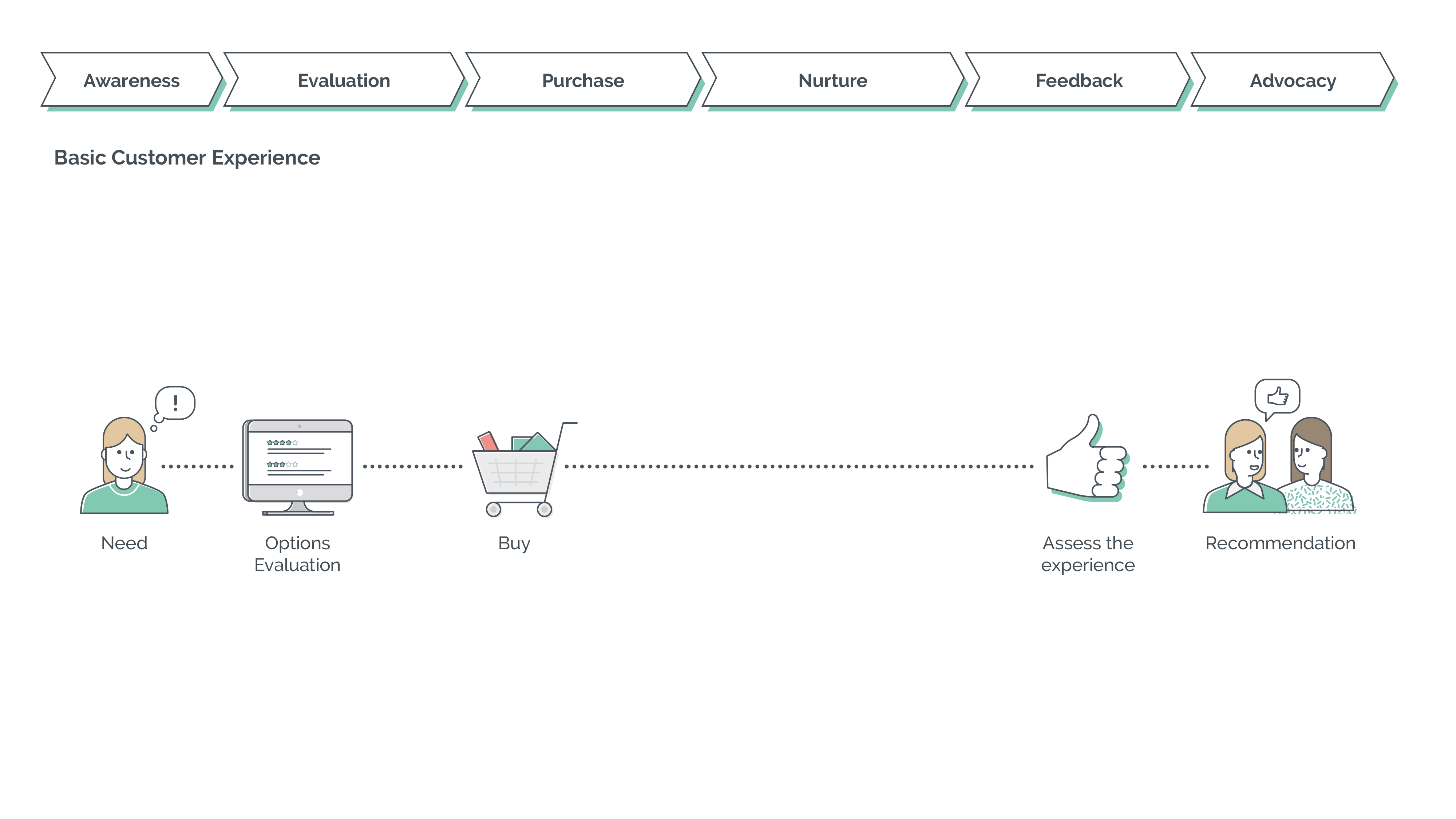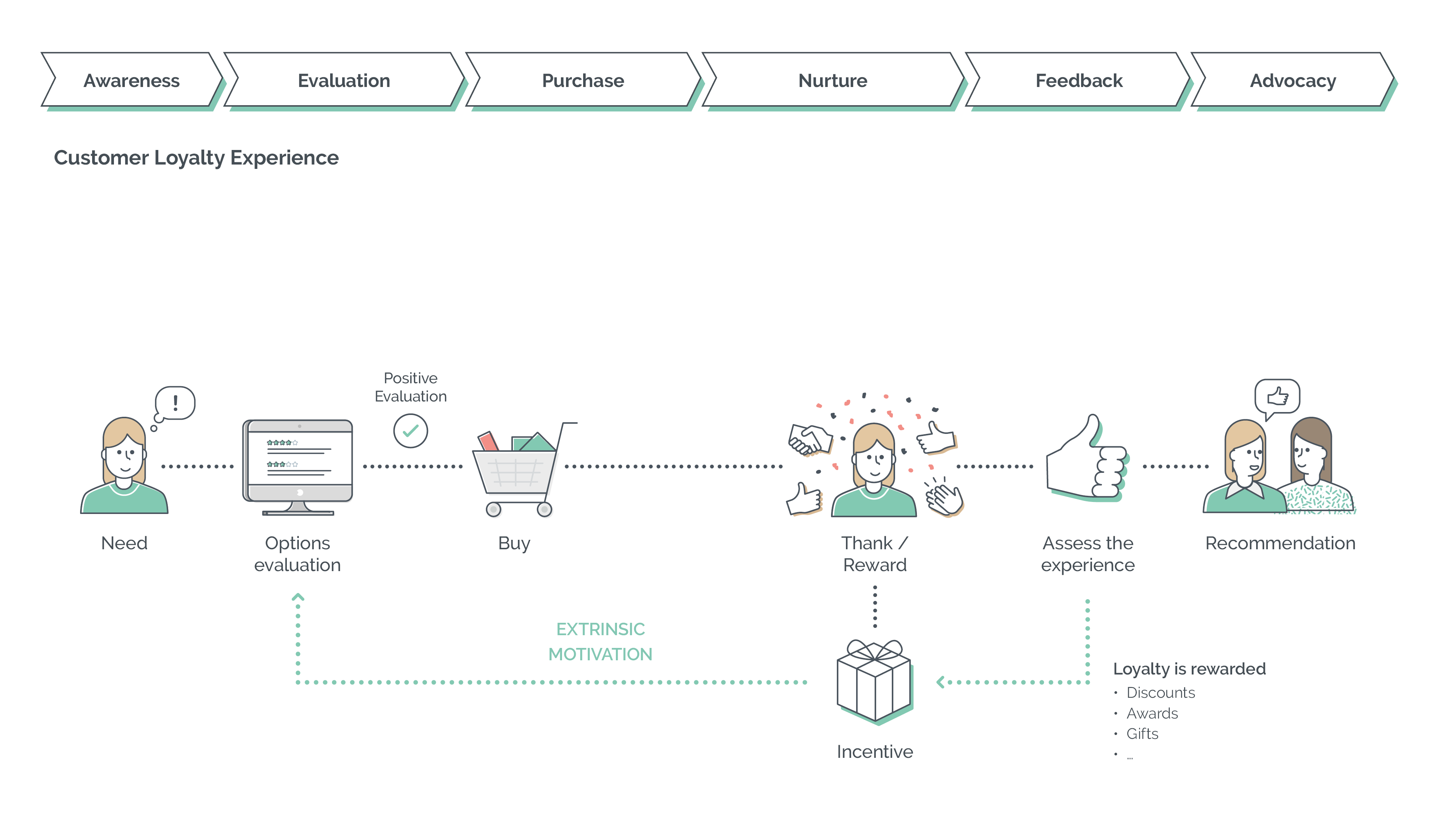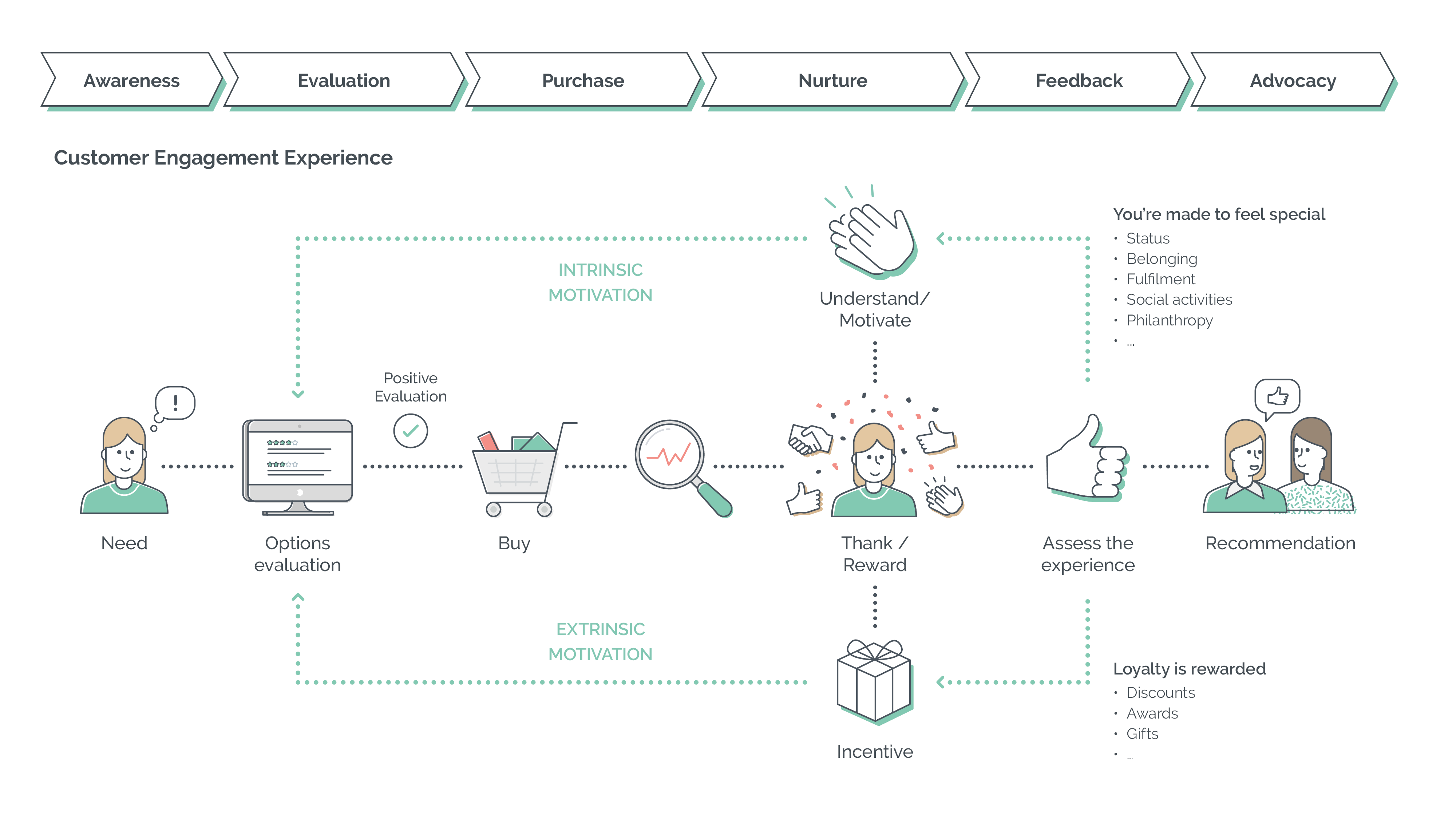Today’s consumer no longer wants to be guided by merely transactional impulses. They want to find more, they look for new or enhanced experiences, they want to feel unique. Subsequently, the retail sector cannot settle for an occasional customer – a ‘peruser’, a browser, a surfer. Brands are in a battle to become that “go-to name”, the first place you think of when you need or want something or the feeling takes you. Somewhere that welcomes you and facilitates your experience each time. How can a brand level up and achieve this coveted status?
In a simple purchase process, the customer perceives a need or interest, browses options, checks offers and makes a decision. The tendency is to settle on a desired product or service and then weigh up the price, or value for money. In this experience if attention to customer retention, engagement or loyalty is weak, should any one of the items in the equation fail you’ve lost a customer, their recommendation or influence, and any chance of a return visit.
Simple loyalty strategies work on the basis of generating a reason or incentive to return to the business, for dependable recurring profitability. Customers appreciate the benefits that the brand gives them for their support and this fosters a sort of reciprocal dependency. You like the brand and the brand likes you. But can we really call this relationship sustainable or even rewarding? How protected is it from alternatives or distractions?
What if we integrated a more focussed Customer Engagement strategy within the experience? Here, the brand introduces elements of intrinsic motivation for the customer: incentives and rewards that speak to the individual’s wants and needs, generating a deeper emotional connection between brand and consumer. At each touchpoint between customer and brand, the offerings are more in tune with the customer’s profile, meaning the purchasing or browsing experience is more satisfying, increasing the individual’s commitment to the process, purchase, and return. Your recommendation will be positive.
The objective is that neither the process nor the relationship end at the point of sale. The brand can continue interfacing or interacting with customers in order to keep building their understanding of needs and tendencies, strengthening relationships with personalised communications and offers, collecting feedback and (importantly) acting upon it to demonstrate more meaningful value for customers than just the product or service offering. In turn, consumers feel recognised and become more involved in the brand beyond their initial browsing interest – advocating willingly for what the brand represents or means to them and seeking more positive experiences as the bond continues to grow over time. Customer retained and engaged. Relationship transformed.





